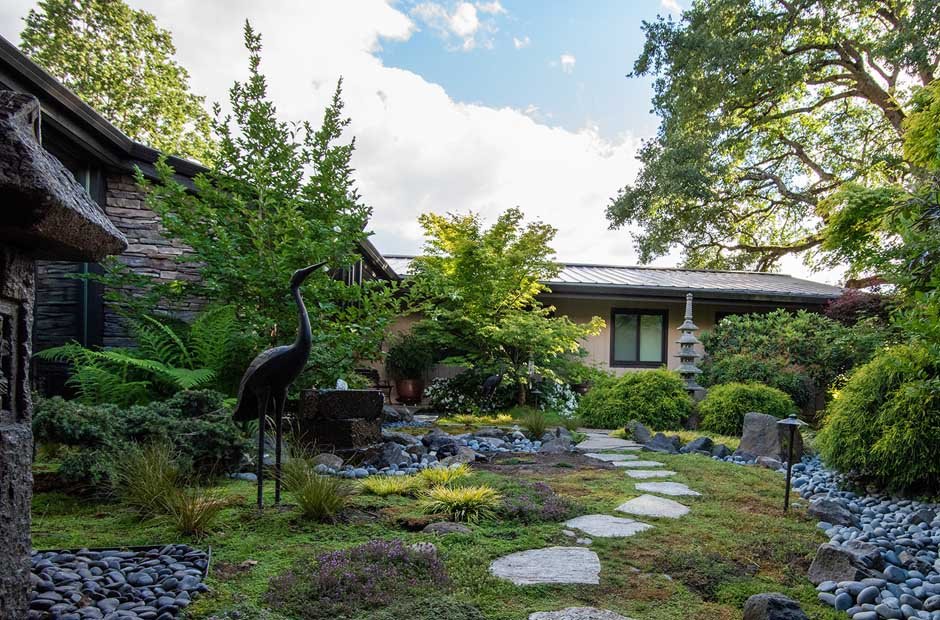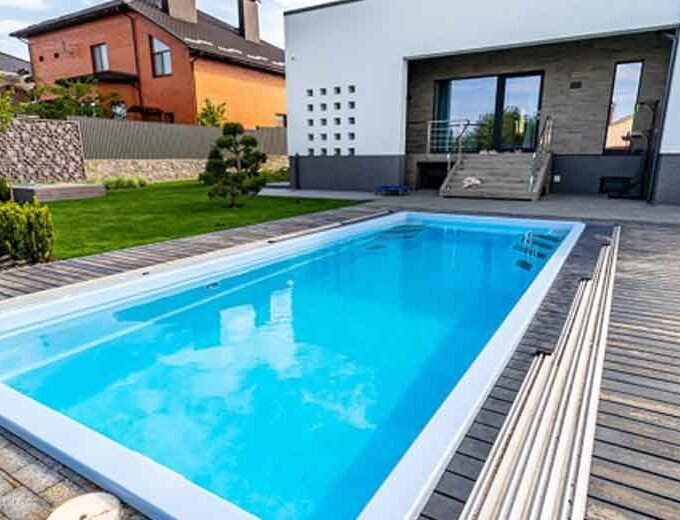Landscape design becomes an important instrument in the pursuit of creating a peaceful and quiet outdoor area, as it can accomplish both beauty and solitude. Thoughtful landscaping can create naturally occurring, visually beautiful boundaries that mix well with the surroundings, going beyond simple walls and fences. There are many methods to make your sanctuary more visually appealing while keeping prying eyes away, from clever design features to well-placed plantings.
Layering Vegetation: Creating Natural Shields
In order to create a natural barrier, layering vegetation entails planting a variety of trees, shrubs, and plants at varying heights and densities. This method gives your environment more depth and richness in addition to seclusion. You can create a view-blocking green wall that nevertheless looks appealing and vibrant by carefully choosing and arranging your plants. Each component of the barrier—the tall trees at the top, the medium-sized shrubs in the center, and the ground-cover plants at the bottom—contributes to its overall aesthetic and structural integrity. Carefully selected trees, like evergreens, which have evergreen leaves, can be placed along the edge of your property to obstruct sightlines effectively.
Using Hedges and Living Fences: Green Alternatives to Walls
An attractive and environmentally responsible substitute for conventional barriers are hedges and living fences. These green buildings can create a continuous wall of vegetation that changes and grows with the seasons, providing seclusion and aesthetic appeal. Living fences, as opposed to static fences, adapt to their environment, improving the outdoor space’s natural beauty and blending in seamlessly with the surroundings. One can also opt for some artificial hedges to make it look elegant and beautiful with less maintenance needs. Think about species like privet, yew, or laurel that are renowned for their powerful growth and thick growth when choosing plants for hedges.
Incorporating Vertical Gardens: Adding Privacy and Greenery
An inventive method of increasing seclusion and making the most of available space is via vertical gardens. These gardens support a range of plants growing vertically by using walls, fences, or specifically constructed structures. Even in small spaces, this method not only produces a verdant privacy screen but also infuses your garden with a revitalizing touch of nature. Vertical gardens can be designed to suit any architectural style, from spacious backyard getaways to contemporary urban balconies. Climbing plants that naturally cling and grow upward, such as wisteria, jasmine, or ivy, can be used to create a thick curtain of greenery when implementing a vertical garden.
Utilizing Hardscape Elements: Blending Structure with Nature
Pergolas, trellises, and ornamental screens are examples of hardscape components that can be included in your landscape design to provide architectural interest and seclusion. These structures combine elegance and use by helping you define areas and create focus points in your garden. Hardscape and natural features work together to provide a balanced combination of solitude and beauty. When covered with climbing plants or vines, pergolas and trellises provide private, shaded spaces that are perfect for gathering and lounging. They provide a semi-transparent barrier that keeps your area feeling open and welcoming while protecting it from view obstructions.
Designing with Water Features: Masking Sounds and Sights
In addition to adding to the visual appeal of your garden, water features like waterfalls, ponds, and fountains can help you achieve seclusion by reducing outside noise and fostering a peaceful mood. The sound of running water creates a calming acoustic barrier that heightens the feeling of solitude by successfully blocking out city sounds and neighboring property talks. Strategically placing a water feature can also block vistas and provide focal points that detract from undesirable locations.
Selecting the Right Lighting: Enhancing Security and Ambiance
Lighting is essential for creating seclusion in your landscape, as well as for adding to its atmosphere and security. Well-planned lighting can draw attention to important features in your garden, make it seem cozy, and keep unsuspecting eyes away at night. Your private areas will stay protected and welcoming if you use uplighting, downlighting, and path lighting in conjunction to delineate spaces and direct movement. Lights that are soft and diffused can provide illumination to outdoor living areas without causing glare or making them visible from the outside. Uplighting bushes and trees draws attention to their shape and produces shadows that provide subtlety and depth.
Conclusion
It takes skill to achieve seclusion via landscaping; it involves intelligent integration of structural and natural features, creative design, and judicious planting. There are several methods to design a private and tranquil outdoor area, ranging from building vertical gardens using hedges and layering plants to adding water features, hardscape components, lighting, and vertical gardens. You can turn your garden into a peaceful, private haven that gives both beauty and relaxation by adopting these secrets.
















